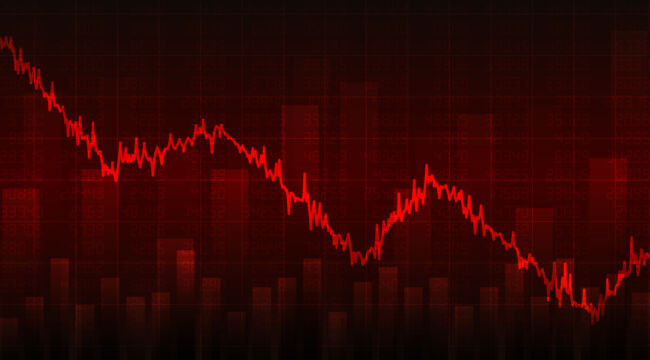The Danger of Flat-Footed Trading
Last week’s abrupt stock market drop was just the beginning.
Yes, there’s probably more pain on the way for the bulls in the weeks ahead. But if you know what to look for — and how to play a potential rotation out of the tech leaders and into what’s working now — you’ll have no problem navigating the dog days of summer trading.
Let’s dive right into the nitty-gritty…
The S&P 500 slipped lower by more than 2.5% last week. The Nasdaq Composite fared a bit worse, coughing up nearly 3%. While these aren’t earth-shattering crashes, the red-hot summer rally is clearly losing its momentum.
No trader or investor can gaze into the future — not with any consistency. But last week’s reset should have been painfully obvious to anyone paying attention to seasonality and just how stretched the rally had become in late July.
One of the stock market’s most devastating tricks is its ability to get us to act on our extreme emotions at the worst possible time. As we discussed last week, no one was interested in buying back in January as the averages began to shoot off their bear market lows. But following a historic first half, everyone’s getting sucked back into stocks.
Those rascally retail traders aren’t the only ones hypnotized by this year’s rally. The pros have also piled back into stocks to appease their clients and play catch-up with their pesky benchmarks. It’s been an all-out chase into the third quarter.
But here’s the tricky part: Can these new bulls hang with their bets if the first half winners in mega-cap tech, semiconductors, and the tech-growth bubble basket begin to correct?
Here Comes Some Seasonal Chop…
Last year’s bear market beatdown is still fresh on the minds of most investors. So I’m guessing continued downside action from these leaders could cause a little anxiety.
Just remember — stocks can’t move higher in a straight line. Pullbacks and downside moves lasting for several weeks (or longer!) are perfectly normal events. We should also keep in mind seasonal trends, including how the S&P typically performs during a pre-election year.
Back in June, I showed you how the S&P tends to out around the end of June and remain in a range until a year-end push. And while the large-cap index did rally more than I expected into the end of July, it’s still well within what we should consider a normal pre-election year cycle.
August is generally a weaker performing month, giving way to a choppy, corrective fall. We can then look forward to a final push higher into December.
My usual caveat for this type of seasonal analysis is that we shouldn’t worry about the S&P’s performance perfectly mirroring the pre-election year composite. The trend is what counts.
And as of this week, the S&P is more or less following these seasonal trends. Is it a perfect match? Absolutely not. But our composite continues to offer a general idea of what we should expect during Q3 and Q4. I’m sticking with it as our guide unless it completely falls off the rails.
Energy Over Tech
If you missed the majority of the tech rally — or you’re just looking to pivot to a stronger trend — the energy sector could be the perfect play right now as seasonal weakness weighs on the first-half leaders.
Last month, I showed you how the Energy Sector ETF (XLE) was pushing back toward a major area of resistance following months of sloppy, range-bound action.
XLE has since broken out, revisited the scene of the crime, and extended its move above its April highs.

That’s a huge move for the year’s worst performing sector, and I’m betting it’s setting these stocks up for higher prices.
We’ve already highlighted some of the early movers. The VanEck Vectors Oil Services ETF (OIH) was arguably the catalyst for this energy breakout as it ripped nearly 40% off its June lows to post new 2023 highs before the calendar flipped to August.
Now, we’re seeing the bigger exploration and production firms perk up. These breakouts are going to catch more than a few investors flat footed since most market watchers are laser focused on the mega-caps and first-half tech snapbacks.
To be clear: I’m not calling for a major tech stock crash. But I do believe the evidence is pointing toward a deeper reset in the greater tech space. That will leave the door open for energy to take the baton and make a serious run.
What do you think? Will the energy rally continue into the end of the year as tech cools? Or are we set for a broader move lower throughout the market? Let me know by emailing me here.



Comments: